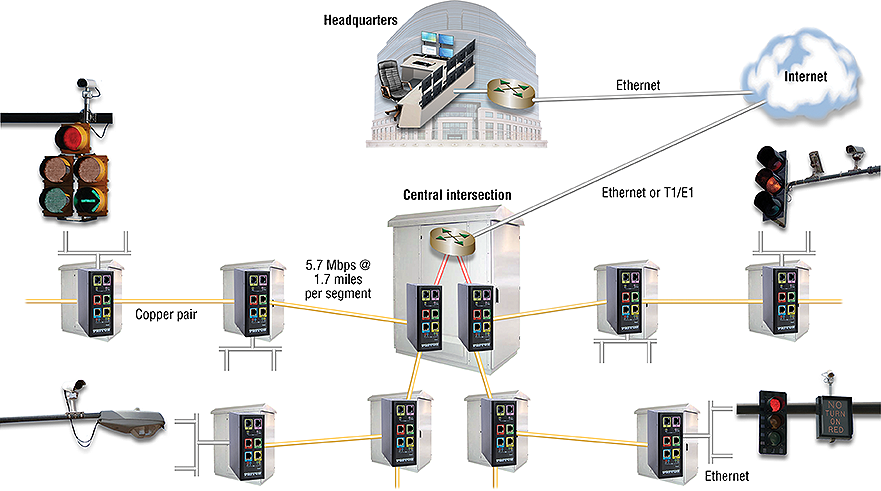The Story
The Maryland State Highway Administration had a mandate to modernize their traffic-control system. The existing system was a closed-loop architecture, which interconnected regional traffic controls over twisted-pair "outside-plant" using low-speed leased-line modems. The new system would be a centrally-managed IP network leveraging monitors in the intersections to provide intelligence to SHA on traffic conditions.
Video sensors mounted on traffic light support structures and inductor sensors are installed under the roadway between intersections. The sensors provide information about the density of drivers facing wait times and the rate of traffic flow through intersections. The data is reported from the sensor to a control box located at a central intersection, which then adjusts the traffic-signal timing according to live conditions. A key requirement of the modernization was the ability centrally and remotely access, manage, monitor and control the system and devices from the SHA Control Center.
The Maryland SHA faced a huge budget hurdle if they needed to provide alternative access to all of the intersections where twisted pair wiring was already in place supporting the legacy modem-based system. The cable runs were too long, the wiring too old and the multi-drop cabling topologies were not compatible or conducive for delivering high-speed Ethernet connectivity.
Maryland SHA needed a solution that would enable Ethernet to operate over twisted-pair cabling across distances of more than 3 miles (4.8 km), support a multi-drop topology and deliver speeds that would support video.
Maryland SHA did their research for a solution and discovered that Patton's CopperLink Ethernet Extenders offers the perfect solution and was actually an in-state manufacturer of the needed networking devices.


